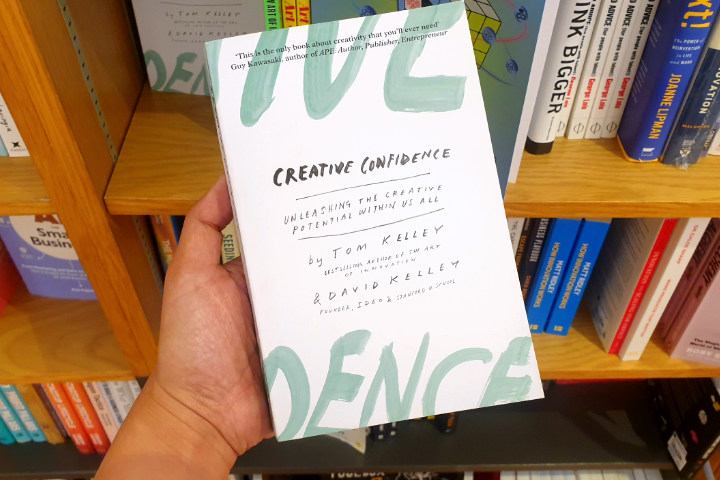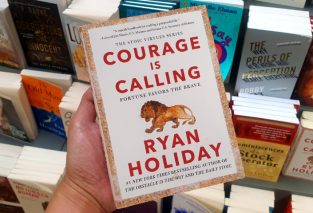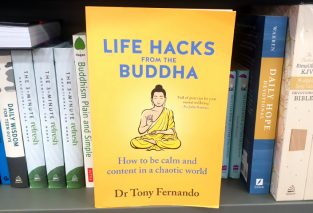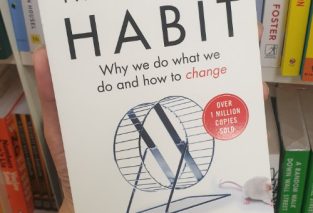
A book that encourages everyone to unlock their creative potential, overcome fear of failure, and embrace innovation by fostering a mindset that creativity can drive personal and professional success.
“Creative Confidence” by Tom and David Kelley offers a profound exploration into the idea that creativity is not a rare gift but a universal skill.
One that anyone can cultivate with the right mindset and tools.
The book, written by the founders of IDEO, a global design and innovation firm, draws on decades of experience in fostering innovation to guide readers on a journey of unlocking their inherent creativity.
It reads like a conversation with a wise mentor, gently coaxing readers out of their shells and into a world where creativity is not just an art form but a way of life.
In a world that often seems dominated by a handful of “genius” creators, the Kelley brothers take it upon themselves to dispel the myth that creativity is something reserved for a select few.
Instead, they present it as an accessible skill, waiting to be nurtured in all of us. It’s not the result of some mysterious spark but a way of thinking
There is an emphasis that we are all born creative, but over time, societal pressures and experiences tend to stifle that natural inclination.
School, in particular, is a prime culprit, as it often trains children to fit into molds, discouraging risk-taking and exploration. This isn’t just a matter of an educational system’s flaws, but a larger cultural trend that suppresses curiosity in favor of conformity.
Creativity is something we can reclaim if we begin to reframe the way we approach challenges and innovation.
The first step in reclaiming our creative potential is to banish the fear of failure. This fear is the root cause of so many creative blocks.
When we are afraid of failing, we become paralyzed, trapped in a cycle of inaction.
This fear manifests in various forms.
We fear that our ideas are not good enough, that others will criticize us, or that our creative efforts will amount to nothing.
This is where the Kelleys offer a shift in perspective. Which is that failure isn’t something to be avoided, but rather something to be embraced.
They urge readers to view failure as a learning experience, not as a reflection of personal inadequacy.
It’s all too easy to let the ghost of failure haunt us, but the co-authors show us that by reframing failure, we can make it a stepping stone toward greater creativity and innovation.
After all, the most groundbreaking innovations often come from those who were brave enough to fail repeatedly.
The concept of “creative confidence,” is what the authors define as the belief in one’s ability to create change, solve problems, and push boundaries.
It’s not just about generating ideas. It’s about the confidence to take those ideas and turn them into tangible results.
Creative confidence doesn’t come from some intrinsic, innate trait. It’s built over time through practice, experimentation, and, most importantly, a willingness to try.
It’s highlighted how important it is to trust our instincts and not overthink ideas.
Too often, we let our logical brains dissect and judge ideas before they even have a chance to fully develop. By overanalyzing, we paralyze ourselves into inaction.
What is proposed instead is a process of ideation and experimentation that encourages action over thought. They suggest that we allow our ideas to take shape through iteration and testing, rather than worrying too much about making the perfect decision from the get-go.
One of the key insights in “Creative Confidence” is the importance of collaboration.
Creativity is not a solitary endeavor but a collective process.
The book make a compelling argument that the best ideas are born when people come together, exchange perspectives, and challenge each other’s thinking.
In fact creating “creative environments” where people feel safe to share ideas without fear of judgment is paramount.
IDEO, the company that the Kelleys helped build, operates on the principle that the best innovations come from diverse teams who are free to share their wildest ideas, no matter how outlandish. This collaborative spirit is a reminder that creativity is not a competition, but a shared journey.
When we stop viewing creativity as a limited resource and begin to see it as something that can grow exponentially through collaboration, we open ourselves up to infinite possibilities.
As I read through the pages, I couldn’t help but reflect on a personal experience that mirrored the book’s thesis. Years ago, I had an idea for a short play, one that I was convinced was going to be groundbreaking. But after some initial attempts at writing, I abandoned it, terrified that it wasn’t good enough. I convinced myself that the concept was far too complicated and would never resonate with readers. It wasn’t until much later, that I realized my mistake. The idea wasn’t flawed. It was my lack of creative confidence that held me back. I had succumbed to the fear of failure, not giving myself the opportunity to test, refine, and evolve the story. What this book teaches us is that we don’t have to have everything figured out from the start. Creativity is messy, imperfect, and sometimes unpredictable. And that’s perfectly fine.
This perspective is akin to viewing a blank canvas not as an intimidating void but as an invitation to play with colors and textures. It’s a mindset that liberates us from the pressure of perfection, allowing us to explore new ideas with curiosity and wonder.
It’s not a linear process but rather a series of experiments where failures are stepping stones to success.
This notion is beautifully illustrated through stories of entrepreneurs, artists, and educators who have embraced failure as an integral part of their creative journey. It’s akin to rewriting a draft multiple times until the story truly sings
The Kelleys also delve into the importance of empathy in the creative process.
They suggest that by understanding the needs and desires of others, we can design solutions that are not only innovative but also meaningful.
This approach resonates deeply with me as a storyteller, where empathy is the key to crafting characters and narratives that resonate with readers. It’s a reminder that creativity is not just about self-expression but also about connecting with others on a deeper level.
Another striking aspect of “Creative Confidence” is the writers’ ability to make their concepts accessible.
They pepper the book with anecdotes and stories from their work at IDEO. Offering readers a glimpse into the real-world application of their principles.
These stories serve as reminders that creativity isn’t something that can be confined to a classroom or a laboratory. It’s something that plays out in everyday life.
The book doesn’t just give theoretical advice. It offers actionable strategies that readers can apply immediately to their own lives, regardless of their profession.
A masterful elaboration of the boundless potential within each of us to innovate and solve problems creatively.
And an invaluable guide for anyone seeking to unleash their creative potential.
Whether you’re a designer, an entrepreneur, or someone working in a completely different field, the tools and mindset shared in “Creative Confidence” can be integrated into your daily routine.
Biggest Takeaway
Creativity is a muscle that, like any other, requires regular exercise.
It’s less about waiting for inspiration to strike or relying on some mystical source of genius.
It’s more about adopting the mindset of someone who is not afraid to try, fail, and try again.
It’s about building confidence in your own creative abilities and trusting that every step, even the missteps, are part of the journey toward innovation.
So, next time you find yourself doubting your creative abilities, just remember that even the best ideas often start out as a little “sketchy.” The key is not to erase them, but to keep drawing until the masterpiece emerges.
Creativity doesn’t need to be a distant dream for the select few.
It’s a skill that, when cultivated, can bring about profound change. Whether you’re looking to change the world or just improve your own life, creativity is the key.
So, take a deep breath, embrace failure, and get ready to unleash the creative powerhouse within you.
Remember. The greatest innovations often begin with the courage to get started, even if your first attempt is a little punny.




